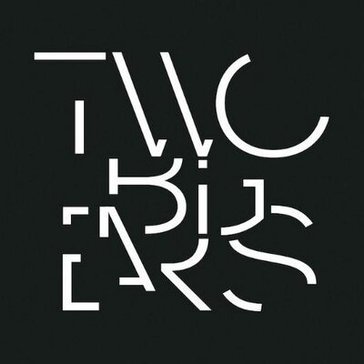Description

Allegro library

OpenAL
Comprehensive Overview: Allegro library vs OpenAL
Certainly! Let's delve into Allegro and OpenAL, two libraries used in the development community, particularly in the realm of multimedia and gaming.
Allegro Library
a) Primary Functions and Target Markets:
-
Primary Functions:
- Allegro is a cross-platform library mainly used for video game development.
- Provides functionalities for graphics, sound, input, and timers.
- Offers support for rendering simple 2D graphics, handling keyboard and mouse input, managing sound effects and music, and processing timers and events.
-
Target Markets:
- Independent game developers seeking an easy-to-use and lightweight alternative for 2D game projects.
- Educational environments where beginners are learning game programming concepts.
- Open-source enthusiasts and small to medium-sized game development studios.
b) Market Share and User Base:
-
Market Share:
- Allegro has a modest market share compared to other more comprehensive game engines like Unity or Unreal.
- It is well-regarded in the niche of educational programming and projects that prioritize simplicity over high-end graphics.
-
User Base:
- Predominantly consists of indie game developers, hobbyists, and educators.
- Known for its friendly and active community that contributes to open-source development and support.
c) Key Differentiating Factors:
- Allegro is intentionally simple and easy to integrate, making it suitable for small-scale projects.
- Focuses on 2D game development, offering a straightforward API with less complexity than larger engines.
- Strong community-driven support given its open-source nature.
OpenAL (Open Audio Library)
a) Primary Functions and Target Markets:
-
Primary Functions:
- OpenAL is designed for rendering multichannel three-dimensional positional audio.
- It is a cross-platform audio API similar to OpenGL for graphics, used for sound effects and music in applications.
- Provides functionalities like sound spatialization, mixing, and playback of recording functionalities.
-
Target Markets:
- Game developers focusing on applications that require realistic spatial audio rendering.
- Developers of multimedia applications needing advanced audio features across multiple platforms.
- Companies in virtual reality (VR) and augmented reality (AR) markets where 3D audio is critical.
b) Market Share and User Base:
-
Market Share:
- OpenAL is not as widely adopted as some other audio libraries due to the entry of more comprehensive or modern solutions tailored to specific environments (e.g., FMOD, Wwise).
- It remains relevant in projects valuing open standards and cross-platform capabilities.
-
User Base:
- Attracts a mix of open-source developers, small to medium-sized game studios, and multimedia developers.
- Some legacy projects continue to use OpenAL due to established workflow and existing codebases.
c) Key Differentiating Factors:
- OpenAL provides a platform-independent 3D audio API, making it versatile across operating systems.
- Adheres to an open standard approach, distinguishing it from proprietary audio solutions.
- Less emphasis on ease-of-use compared to higher-level audio toolkits, targeting developers with specific 3D audio needs.
Comparison Summary:
- Both libraries serve specific roles in multimedia application development—Allegro for 2D gaming and OpenAL for 3D audio—highlighting their specialized nature against comprehensive engines or audio solutions.
- Allegro shines with its simplicity and beginner-friendly nature, whereas OpenAL stands out with its platform-independent 3D audio capabilities.
- Market share for both is relatively niche but crucial for developers requiring lightweight, open-source solutions. Each library appeals to communities valuing simplicity, open standards, and cross-platform support.
Contact Info

Year founded :
Not Available
Not Available
Not Available
Not Available
Not Available

Year founded :
Not Available
Not Available
Not Available
Not Available
Not Available
Feature Similarity Breakdown: Allegro library, OpenAL
Allegro and OpenAL are both libraries used in multimedia and game development, but they have different primary focuses and use cases. Here's a feature similarity breakdown for both:
a) Core Features in Common
-
Audio Processing:
- Both libraries can handle audio playback and sound effects, which is crucial for creating immersive game experiences.
-
Cross-Platform Support:
- Allegro and OpenAL both offer cross-platform support, allowing developers to create applications or games that can run on multiple operating systems.
-
Open Source:
- Both are open-source libraries, enabling developers to modify and distribute the libraries as needed.
b) User Interface Comparison
-
Allegro:
- Allegro offers a more comprehensive multimedia library interface that covers graphics, input, timers, and audio. It typically uses a procedural API style that is straightforward for setting up game loops, handling events, etc.
- Its design focuses on ease of use for game developers, with components that handle various multimedia aspects beyond just audio.
-
OpenAL:
- OpenAL's interface is highly focused on audio and does not provide other multimedia support like graphics or input handling.
- The API is modeled similarly to OpenGL, using an object-oriented style with context and state management, ideal for those familiar with OpenGL.
c) Unique Features
-
Allegro:
- Graphics Support: Allegro includes robust graphics handling capabilities, making it a more comprehensive solution for 2D game development. It supports drawing routines, transformations, and image manipulation.
- Input Handling: It offers built-in support for keyboard, mouse, and joystick input, which permits easy handling of player interactions.
- Scene Management: Allegro has built-in support for managing game loops and assets — useful for rapid game development.
-
OpenAL:
- 3D Positional Audio: OpenAL excels in handling 3D audio, allowing developers to create immersive sound environments where sounds can come from different directions and distances.
- Sound Space Simulation: Features like Doppler effect and distance attenuation are handled professionally, simulating real-life audio environments and improving realism in games.
In summary, while both Allegro and OpenAL can handle audio, Allegro provides a broader range of multimedia support suited for complete game development, whereas OpenAL specializes in high-quality 3D audio processing. Developers typically choose between them based on whether they need a full game development solution (Allegro) or an advanced audio library for complex sound scenarios (OpenAL).
Features

Not Available

Not Available
Best Fit Use Cases: Allegro library, OpenAL
Allegro Library
a) Best Fit Use Cases for Allegro Library:
-
Indie Game Development: Allegro is particularly well-suited for independent game developers or small studios needing a simple yet robust framework for 2D game development. It offers ease of use, cross-platform support, and a range of features tailored for rapid game prototyping and development.
-
Educational Projects: Allegro is a top choice for educational institutions or students creating games or multimedia applications as part of coursework. Its straightforward API and comprehensive documentation make it ideal for learning programming and game development concepts.
-
Multimedia Applications: Developers working on multimedia applications, such as visual effects, simple animations, or interactive kiosks, can benefit from Allegro’s graphics handling and cross-platform capabilities.
d) Industry Verticals and Company Sizes:
-
Small to Medium Enterprises (SMEs): SMEs involved in software development can leverage Allegro for creating customized interactive solutions without the overhead of more complex engines like Unity.
-
Entertainment and EdTech: Companies in the entertainment or educational technology sectors that need to create lightweight but engaging content can use Allegro to streamline development time and costs.
OpenAL
b) Best Fit Use Cases for OpenAL:
-
Gaming Industry: OpenAL is frequently used in both the indie and commercial gaming sectors for implementing advanced audio effects, such as 3D sound environments, which enhance the immersive experience of action, RPG, and simulation games.
-
Virtual Reality (VR) and Augmented Reality (AR): OpenAL is suitable for projects in VR and AR that require spatial audio to enhance user immersion, providing high-quality sound positioning based on user movements.
-
Simulation Software: Industries such as aviation, automotive, and military simulation can benefit from OpenAL’s ability to replicate realistic soundscapes and spatial audio, adding depth to simulations.
d) Industry Verticals and Company Sizes:
-
Large Enterprises and Specialized Studios: Large companies or specialized audio studios that require high-fidelity, architecturally neutral audio solutions would benefit from OpenAL’s capabilities in achieving high-performance sound processing.
-
Tech and Media: This library is useful in tech and media sectors looking to capitalize on sound design and acoustics for products like spatial audio systems, game engines, or complex VR/AR environments.
In summary, Allegro is geared towards simpler, cost-effective 2D projects ideal for SMEs and educational settings, whereas OpenAL focuses on more advanced audio-centric applications suitable for larger enterprises and specialized technological solutions. Both cater to different technical requirements and market needs based on their specific strengths in handling graphics and audio respectively.
Pricing

Pricing Not Available

Pricing Not Available
Metrics History
Metrics History
Comparing undefined across companies
Conclusion & Final Verdict: Allegro library vs OpenAL
Conclusion and Final Verdict: Allegro Library vs. OpenAL
When comparing the Allegro library and OpenAL, it's important to recognize that these two libraries, while sometimes used for overlapping purposes, are fundamentally different in their focus and capabilities. Allegro is a comprehensive game development library that provides a wide array of functionalities including graphics, input, and sound, whereas OpenAL is specifically designed for audio rendering, providing a powerful solution for 3D sound.
a) Best Overall Value:
Allegro Library is likely to offer the best overall value for developers looking to create games or multimedia applications that require a full suite of features, including graphics, input handling, and sound. It is a versatile solution that supports multiple aspects of game development within a unified framework.
OpenAL, however, would represent the best value for developers specifically needing robust and realistic 3D audio capabilities. It shines in projects where high-quality sound rendering is crucial, such as in advanced gaming environments or virtual reality applications.
b) Pros and Cons:
Allegro:
Pros:
- Comprehensive Toolset: Offers a wide range of functionalities beyond audio, including graphics and input handling, which makes it suitable for game development.
- Ease of Use: Known for its simplicity and ease of integration, especially for beginners in game development.
- Cross-Platform Support: Works on Windows, macOS, Linux, and other platforms, which broadens its applicability.
Cons:
- Basic Audio Capabilities: While it supports basic audio functions, it may not be as advanced as specialized audio libraries.
- Not Focused on 3D Sound: Might not fulfill the needs of projects requiring advanced 3D audio effects.
OpenAL:
Pros:
- Specialized Audio Processing: Provides advanced functionality for 3D audio, offering spatial audio features like reverb, Doppler effects, and localization.
- High-Performance Sound Rendering: Capable of delivering high-quality audio experiences in environments where sound realism is prioritized.
- Cross-Platform Compatibility: Supports a variety of operating systems, including Linux, Windows, and macOS.
Cons:
- Limited Scope: Primarily focused on audio, so developers needing broader functionalities will have to integrate additional libraries.
- Complex Setup: Might have a steeper learning curve if developers are not familiar with 3D audio concepts.
c) Recommendations:
For users deciding between Allegro and OpenAL, the choice largely depends on the primary needs of their project:
-
Choose Allegro if you are a developer or a hobbyist looking for an all-in-one library suited for creating simple to moderately complex games or multimedia applications. Its ease of use and comprehensive tools make it ideal for those who want to focus on game logic and design without delving deeply into the complexities of each system component.
-
Opt for OpenAL if your project requires sophisticated 3D audio rendering, such as in simulations, VR, or games where sound directionality and realism significantly enhance the user experience. This is suitable for developers who are capable of integrating multiple libraries and who prioritize audio quality and spatial effects in their application.
Ultimately, the decision should be based on the specific requirements and objectives of the project, as well as the expertise and resources available to the developer or team.
Add to compare
Add similar companies



